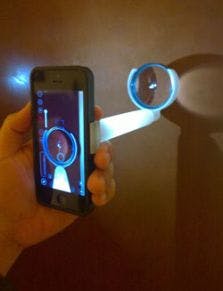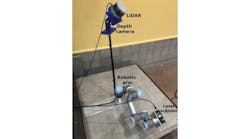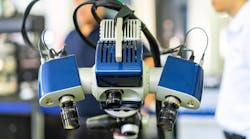I recently came across an article describing a system developed by Stanford researchers in which a smartphone (in this case, an iPhone), was used to capture high-quality images of the front and back of the eye.
The device uses two inexpensive adapters that enable the phone to capture images and make it easy for anyone with minimal training to take a photo of the eye and share it securely with other health practitioners or store it in the patient’s electronic medical record. One of the device’s developers, Dr. Robert Chang, even referred to the device as "Instagram for the eye."
I first thought to myself, "Everyone has a smartphone. If this works, and actually works well, why wouldn’t a practice want to use it and save money?" While that may be true, I thought it would make sense to ask my colleague, Andy Wilson if he could give me the name of his optometrist so I could get a professional opinion. (Andy wears glasses, I don’t). As it turns out, Andy’s optometrist, Dr. Kevin M. Chauvette, O.D.,F.C.O.V.D., Merrimack Vision Care, was willing to share his opinions on it.
Vision Systems Design: Do you think this works, and if so, why wouldn’t more doctors opt for this significantly cheaper option?
Dr. Chauvette: I took a look at the device in the article, and it could certainly work. I would need to try it out to be certain, but the idea is sound and it would certainly make for a less expensive option for ocular photos. I am not certain how easy it would be to get a good view of the fundus (especially older patients with small pupils), but anterior segment photos should be fairly simple and clear.
Vision Systems Design: Would you use it? Is it a gimmick?
Dr. Chauvette: If it worked, even just for anterior segment photos, I would probably use it. I don’t think patients would mind the use of a smartphone for this, in fact, I think many would be impressed with the technology.
This is, by no means, the first time an iPhone or smartphone was used for such an application. In this article from last July, Andy wrote about how smartphones are being used as portable imaging systems. It goes beyond that, of course, but this is just an example of smartphones replacing more expensive alternatives.
Also of note is the fact that Dr. Chauvette expressed interest in trying out one of these devices, which the Stanford team has dubbed the “EyeGo.” I’ve reached out to the team regarding this possibility and will certainly follow up with a blog should that come to fruition.






